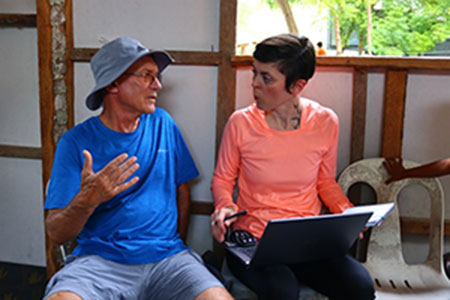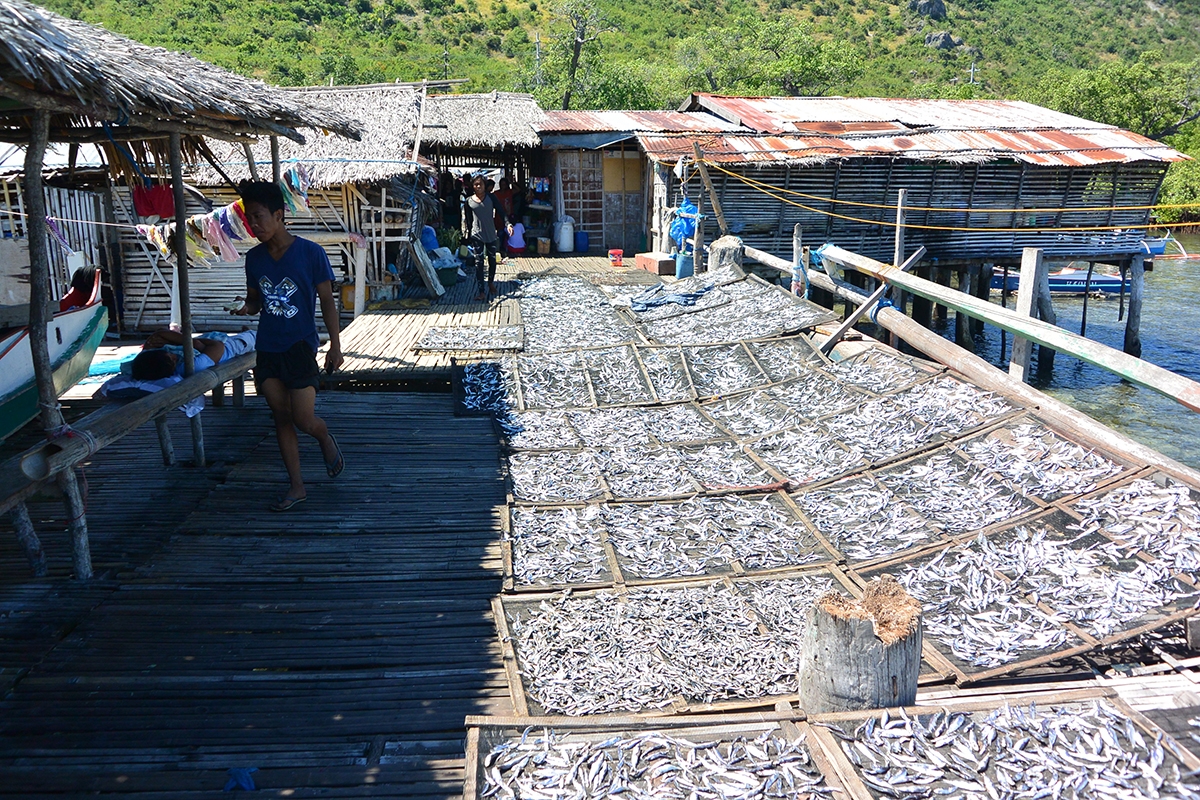Study finds reciprocity is strongest motivator of unique human practice of daily sharing

Coastal village of the Sama people in the Philippines. Photo courtesy Kim Hill
Humans are a uniquely cooperative species who display this behavior way beyond what is found in any other living social organism. From humans’ earliest societies, these sociable tendencies have manifested in the sharing of a wide variety of material goods — food, money, medicine, clothing — between both related and unrelated individuals. Research on the mechanisms driving this form of cooperation have typically focused only on food sharing or on a limited range of other goods, ignoring the many different types of resources that can be transferred between individuals on any given day.
In a study published last week in PLOS ONE, ASU researchers Julia Phelps and Kim Hill examined the mechanisms driving cooperative transfers of all types of material goods in the community of Linao, a small village of marine foragers who live in stilt houses built atop the coastal ocean of Southern Mindanao Island in the Philippines. The researchers found that while reciprocity is the strongest overall motivator of resource sharing between households, transfers of food, money and other goods are also motivated by secondary mechanisms like kinship, relative age and relative need.
“This is the first study in a small-scale society that examines the flow of all goods and services between households on a daily basis,” said Hill, a research scientist with the Institute of Human Origins and a professor in the School of Human Evolution and Social Change.
Collaborating with two Filipino researchers from the University of the Philippines and Mindanao State University, Phelps and Hill collected and analyzed over three years of interview and observational data on daily resource transfers between households in the community. The research team documented how households produce and utilize resources acquired from fishing, foraging in marine intertidal zones, and collecting firewood and medicinal plants along the shoreline and in the mountain overlooking the village.
“Since marine foraging groups have been investigated less often than their terrestrial counterparts, our team felt that it was crucial to describe the full economy of Linao — what types of resources residents produce, who produces them, and how they are used in day-to-day life. This enabled us to paint a clearer picture of how daily interhousehold sharing complements individual resource production to support the Linao way of life,” said Phelps, a graduate student with the School of Human Evolution and Social Change who has been a member of the study team since 2017.
Kim Hill (left) and Julia Phelps working in the Sama village. Photo courtesy Julia Phelps
To better understand the high level of daily sharing observed between households, Phelps and Hill examined household-level characteristics associated with increased daily and long-term transfers of material goods. In interviews with Linao residents, many also directly stated a strong preference for sharing with people that shared with them in return, and they believed that households who received the most typically also shared the most. Individual analyses of food, money and other shared goods further revealed that age-specific patterns of resource sharing differed across resource types, such as elderly households being the most likely to share food and the least likely to share money. The overall findings confirmed that reciprocity was the strongest motivator.
“The flow of material goods gathered through this research is extremely high,” Hill noted, “almost matching the value of daily household productive income. People not only share food with other villagers, but also small amounts of money, medicine, clothing, firewood, adornments, tools, building materials, and on and on.”
This extensive reliance on many different forms of daily sharing, including transfers of storable resources like money, is an important aspect of human uniqueness.
The next round of analysis by the research team will investigate the provisioning of services that do not have a physical component to “measure” — caretaking, domestic and technological assistance, grooming, etc. — between Linao individuals and households. Observations in the Linao village also indicate that individuals often reciprocally shared with cooperative partners across different “currencies” of material goods or services; for example, receiving help with child care and then reciprocating later with food. Hill and Phelps suspect that when these “cross-currency” transfers are considered, the importance of both short- and long-term reciprocity between residents will be even more apparent.
A bountiful fish season can be shared among the community. Fisherman receive other goods and services in exchange for their efforts. Photo courtesy Kim Hill
Linao’s unique culture may also contribute to the high levels of sharing observed in the village. An ongoing follow-up study is examining the role that religion, traditional Sama beliefs and other cultural norms may play in enhancing cooperation beyond what can be explained by purely fitness-based mechanisms.
“One of the really unique things about the Linao is just how much people share with and help each other every single day,” said Phelps. “It’s clear from the quantitative research and simply chatting with Linao residents that daily resource and service transfers are a critical aspect of their economic strategy. What we don’t yet know is how much of this sharing behavior is driven by local cultural rules and beliefs, some of which may prescribe sharing even when it provides no benefit to the donor.”
More Arts, humanities and education

ASU professor's project helps students learn complex topics
One of Arizona State University’s top professors is using her signature research project to improve how college students learn…

Award-winning playwright shares her scriptwriting process with ASU students
Actions speak louder than words. That’s why award-winning playwright Y York is workshopping her latest play, "Becoming…

Exceeding great expectations in downtown Mesa
Anyone visiting downtown Mesa over the past couple of years has a lot to rave about: The bevy of restaurants, unique local shops…



